OFFICE BAROQUE
This video documents the thinking behind and making of Office Baroque, an on-site work the American artist Gordon Matta-Clark (1943-1978) created in 1977 in an empty house in the centre of Antwerp. For months, Cherica Convents and Roger Steylaerts followed the artist and others involved in the project, till its final completion. The makers remain deliberately in the background: the video is detached and merely documents. Supported by the menacing soundtrack (Syntheses, by André Stordeur), the documentary becomes almost abstract. The makers abstain from any comments whatsoever—they opt for soberness and detachment, creating space for their own subjects: the house, the artist, the curators and the labourers working on Office Baroque. Their editing is postmodern: throughout the entire documentary, we frequently see the final result, even when Matta-Clark is still engaged in the preparatory activities.
For this school of contemporary artists, the process is as important as the result, the work itself, curator and initiator Flor Bex explains. The interview with Bex provides a clear insight into the work process of the architect-artist and highlights the problems that can occur during the realisation of his or her concept. And in Antwerp, there were scores of problems! Take for example the cut-out the artist had wanted to make in the façade of a detached, medium-sized, five-storey apartment block facing Het Steen, the medieval castle near the river Scheldt. The artist had intended to make a spherical cut-out in the building, with the centre of the sphere outside the building. However, the idea was rejected by the town council. Matta-Clark therefore decided to turn the exterior project into an interior project—which made it an exception in his oeuvre. The artist-architect thus cut out a fragment of the building at every floor, creating a deconstructivist sculpture that stretches from the roof to the basement. He chose to work with two semi-spheres, one in the centre of the building, the other situated at a distance defined by the golden ratio. The intersection of these two semi-spheres created the main opening that was tear-shaped.
What was truly amazing, was the fact that Matta-Clark did most of the work himself, with the critical eye of the architect and the precision of the painter. Most of this involves hard physical labour. We see the artist measuring, drawing, hammering, cutting, sawing, slashing and drilling. Matta-Clark: “This is my first project vertically through a building. In fact, the public moves through ‘drawings’, rather than through spaces. The concept is the product of a complex drawing and not of the interpretation of a façade, like my earlier work. There is point here from which it is possible to get a direct idea of the work. The complexity and the depth of the work are almost impossible to size up or document.”
Taking their time, Convents and Steylaerts confront us with every detail. The registering camera as it were scans the architecture and the interventions of the artist. Not only the soundtrack alienates the viewer, but also the images of passers-by and of life outside: a brass band, wading birds and tourists skewing at the camera contrast sharply with the mental world and environment in which the artist lives.
Matta-Clark considered Office Baroque his best work ever, “because it was so invisible.” It was the last large-scale work the artist worked on before he died in 1978 of cancer.
This work has been digitised in the frame of DCA Project
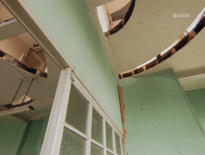
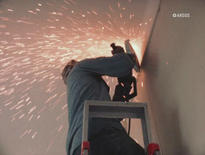
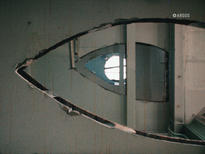
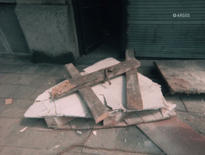
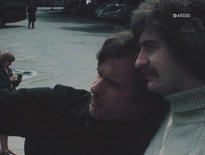
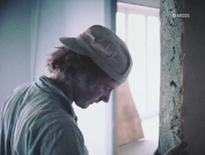
- Formaat 16mm(16 mm.)
- Kleursysteem PAL
- Kleur col.
- Jaar 1978
- Duur 00:42:00
- Taalinfo
Gesproken: English US, Dutch/ Flemish
-
Kunstenaars
-
EVENEMENTEN